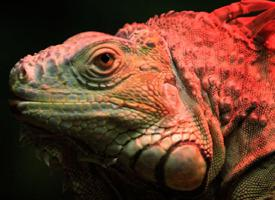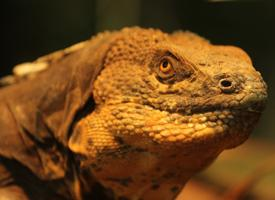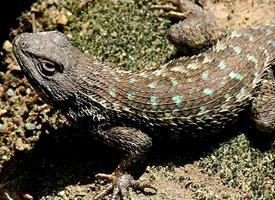
Ismert mint
- Ježíšova ještěrka
Állatleírás
The Eastern casquehead iguana, scientifically known as Laemanctus longipes, is a distinctive and fascinating species of lizard belonging to the family Corytophanidae. This species is primarily found in the humid, tropical forests and lowlands of Central America, ranging from Mexico to Honduras. Its unique physical and behavioral characteristics make it a subject of interest among herpetologists and reptile enthusiasts alike.One of the most striking features of the Eastern casquehead iguana is its elongated body, which is adorned with a vibrant green coloration that provides excellent camouflage among the foliage of its habitat. This species can reach a total length of up to 90 cm (35 inches), including its tail, which it uses for balance and as a defensive tool against predators. The skin of Laemanctus longipes is covered in small, granular scales that enhance its texture and appearance.
The "casquehead" in its common name refers to the prominent, helmet-like structure on the top of its head, which is more pronounced in males than in females. This casque is thought to play a role in both inter-species communication and in territorial disputes. Additionally, males can be distinguished by their larger size and more vibrant coloration compared to females.
Eastern casquehead iguanas are arboreal, spending most of their time in trees. They are excellent climbers, thanks to their sharp claws and strong limbs. During the day, they bask in the sunlight to thermoregulate, while at night, they retreat into the foliage to sleep and hide from potential predators.
Their diet is primarily herbivorous, consisting of leaves, flowers, and fruits, although they have been known to occasionally consume insects and other small animals. This dietary flexibility helps them adapt to various environments and food availabilities.
Reproduction in Eastern casquehead iguanas is oviparous, meaning they lay eggs. The mating season typically occurs during the rainy season when food is abundant. Females lay their eggs in nests dug into the ground, where they will incubate for several months before hatching. The hatchlings are independent from birth and receive no parental care, which is typical among many reptile species.
Despite their adaptability, Eastern casquehead iguanas face threats from habitat destruction due to deforestation and land development. Additionally, they are sometimes captured for the pet trade, although they require specific care and are not recommended for inexperienced reptile owners.
In summary, the Eastern casquehead iguana is a remarkable reptile with a unique appearance and fascinating behaviors. Its adaptation to arboreal life, distinctive casque, and vibrant green coloration make it a standout species within its habitat. Conservation efforts are essential to ensure the survival of this species in the wild, highlighting the importance of preserving the rich biodiversity of Central America's tropical forests.
Hasonló állatok
Új állatfotók
Top 10 állat
- Dolphin gull (Leucophaeus scoresbii)
- Diana monkey (Cercopithecus diana)
- Moustached guenon (Cercopithecus cephus)
- Galápagos tortoise (Geochelone nigra complex)
- Japanese macaque (Macaca fuscata)
- Stone loach (Barbatula barbatula)
- Russian tortoise (Testudo horsfieldii)
- Greek tortoise (Testudo graeca)
- Common flying dragon (Draco volans)
- Vendace (Coregonus albula)


